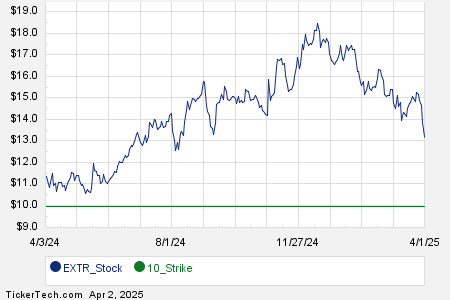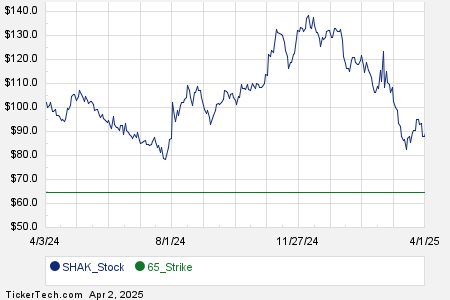Trump’s Upcoming Tariff Plan: Impacts and Investor Strategies
Wednesday marks “Liberation Day,” as President Trump refers to April 2, the date when he intends to reveal his significant reciprocal tariff plan. Trump emphasizes the importance of this initiative, stating:
This is the beginning of Liberation Day in America. We’re going to charge countries for doing business in our country and taking our jobs, taking our wealth, taking a lot of things that they’ve been taking over the years. They’ve taken so much out of our country, friend and foe. And, frankly, friend has been oftentimes much worse than foe.
A White House memo reveals that the new tariffs will be customized for each U.S. trading partner. Their purpose is to counteract tariffs imposed on U.S. goods and address issues like regulations, value-added taxes (VATs), and weak intellectual property protections that disadvantage American manufacturers.
Since the announcement, speculation has surged regarding the implications of these tariffs. Questions abound: Is Trump using tough rhetoric as a negotiating tactic? How severe could the tariffs be? Is he prepared to jeopardize the economy and the Stock market for his goals?
Our hypergrowth/technology expert, Luke Lango, editor of Innovation Investor, outlined three potential ways tariffs might be applied:
- Matching existing tariff rates of other countries to close the differential.
- Imposing new tariffs equivalent to the respective VAT rates.
- Targeting non-tariff barriers like sanitary standards and licensing with new tariffs.
What are the implications of each approach for the economy? Here’s Luke’s perspective:
The first option – matching tariff rates – seems very likely and won’t do a ton of damage. It will increase the average tariff rate by 1-2 points, barely affecting GDP growth and inflation.
The second option – addressing the VATs – is probable but would inflict more significant damage. It could raise the average tariff rate by over 10 points, potentially reducing GDP by almost 2 points and inflating prices by approximately 1 point.
The third option – pursuing non-tariff measures – seems unlikely, but would cause substantial harm. It might increase the average tariff rate by nearly 30 points, negatively impacting GDP by 4 points and inflation by 2-3 points.
In this worst-case scenario, the global economy could enter a recession.
However, if only options one and two take place, particularly on a temporary basis, the economy may avoid recession. This week and the subsequent weeks are therefore critical.
Why the Tariff Situation May Resolve Quickly
Luke asserts that the White House is prepared to adopt a hardline stance in this global trade conflict. Although Trump faces criticism and economic slowdown forecasts, he remains undeterred.
Despite the prevailing pessimism, Luke anticipates a swift resolution:
Despite all the intense and hostile rhetoric currently, I expect a rush to the negotiating table, leading to new trade deals in April.
Within the first two weeks of April, we expect many countries to arrive at agreements with the U.S. that would result in the repeal or delay of most tariffs.
If this occurs, the tariffs may not persist beyond a few weeks, and by late April, the situation could be significantly clearer.
Once the tariff issues settle, fears of a recession may subside, consumer confidence could recover, and economic activity may strengthen, leading to a stock market rebound.
Should Trump prove Luke incorrect and a major trade war ensue, investors would need to adopt a defensive strategy. However, for now, Luke favors a more optimistic outlook.
Investment Strategies for the Short-Term Tariff Challenges
If you follow Luke regularly, you’ll know his recommended action: buy leading AI and technology stocks that have experienced declines since mid-February.
Luke points to the Bloomberg Artificial Intelligence Aggregate Equal Weight Total Return Index, which he describes as “the best comprehensive measure of AI stocks in the market.” This index includes companies from smaller entities like Astera Labs (ALAB) and Celestica (CLS) to giants like Nvidia (NVDA) and Microsoft (MSFT).
He notes that last week, the index hit a significant low:
The AI Index is trading at its cheapest valuation since the AI boom started in late 2022 (21X forward earnings). It has dropped to its extreme technical support level (the 250-day moving average), which it has generally maintained throughout the AI boom.
Provided the economy avoids a recession, this situation presents an opportunity for savvy investors.
AI Stocks Poised for Potential Recovery Amid Uncertain Market
The recent downturn in AI stocks may be reaching a bottom, predicting a significant rally as summer approaches.
Potential Rally for AI Stocks
Luke analyzes the performance of AI stocks since the late 2022 low, noting they have fluctuated between 24X and 30X forward earnings, averaging a multiple of 26X. Currently, with the index at 21X forward earnings, a return to the average multiple could yield a gain of 20% to 25% from today’s levels.
Importance of Earnings in Stock Movement
In our recent Digests, we highlighted that in the short term, sentiment drives stock prices significantly. Morgan Stanley Research states that sentiment accounts for almost 50% of stock movement over one year or less. However, the connection between earnings and stock price strengthens over time. After ten years, earnings impact 74% of stock movement, while sentiment effects diminish to just 5%.
Despite recent selloffs fueled by sentiment, AI earnings forecasts are on the rise, providing a positive backdrop. Luke comments, “AI stocks have dropped significantly, hitting two-year lows, yet profit estimates are continuing to improve.” This trend suggests a possible rebound for these stocks.
Navigating a Critical Market Binary
As discussed in previous Digests, the market faces a critical binary: whether the resolution of current tariff issues signals a boom or bust for AI stocks. The outcome hinges on the balance of bullish earnings against bearish sentiment.
To outline this binary, Luke states, “AI stocks are fundamentally strong, but fears surrounding earnings amid a potential trade war and slowing global economy are weighing on them.” Optimistically, he adds, “If the trade conflict stabilizes and the economy remains robust, earnings estimates could rise further, rendering the current low valuations unjustifiable.”
Investment Strategies for AI Stocks
During a recent event, Luke, along with Louis Navellier and Eric Fry, shared strategies for investing in AI. Given today’s reduced prices on high-performing AI stocks, the timing is crucial. The experts addressed the widening gap between those benefiting from technological advancements and those left behind, coining this disparity as “The Technochasm.”
Having accurately predicted this trend in 2020, they emphasize the urgency for investors to recognize and respond appropriately. Luke remarks, “The Technochasm will only widen further; companies and individuals must either adapt or risk falling behind.” Investors who have heeded this advice have reaped substantial rewards, with returns of around 1,350% from Freeport-McMoRan Inc. (FCX), 1,000% from Nvidia (NVDA), and over 1,200% from Fulgent Genetics Inc. (FLGT) in less than two years.
Looking Ahead: Will Market Corrections End?
As we analyze the discussed points, attention returns to the upcoming events around “Liberation Day.” Will markets overcome tariff fears and the recent downturn? Or will stringent tariffs continue to bring volatility, negating past market gains?
The answers will soon unfold.
Best regards,
Jeff Remsburg



